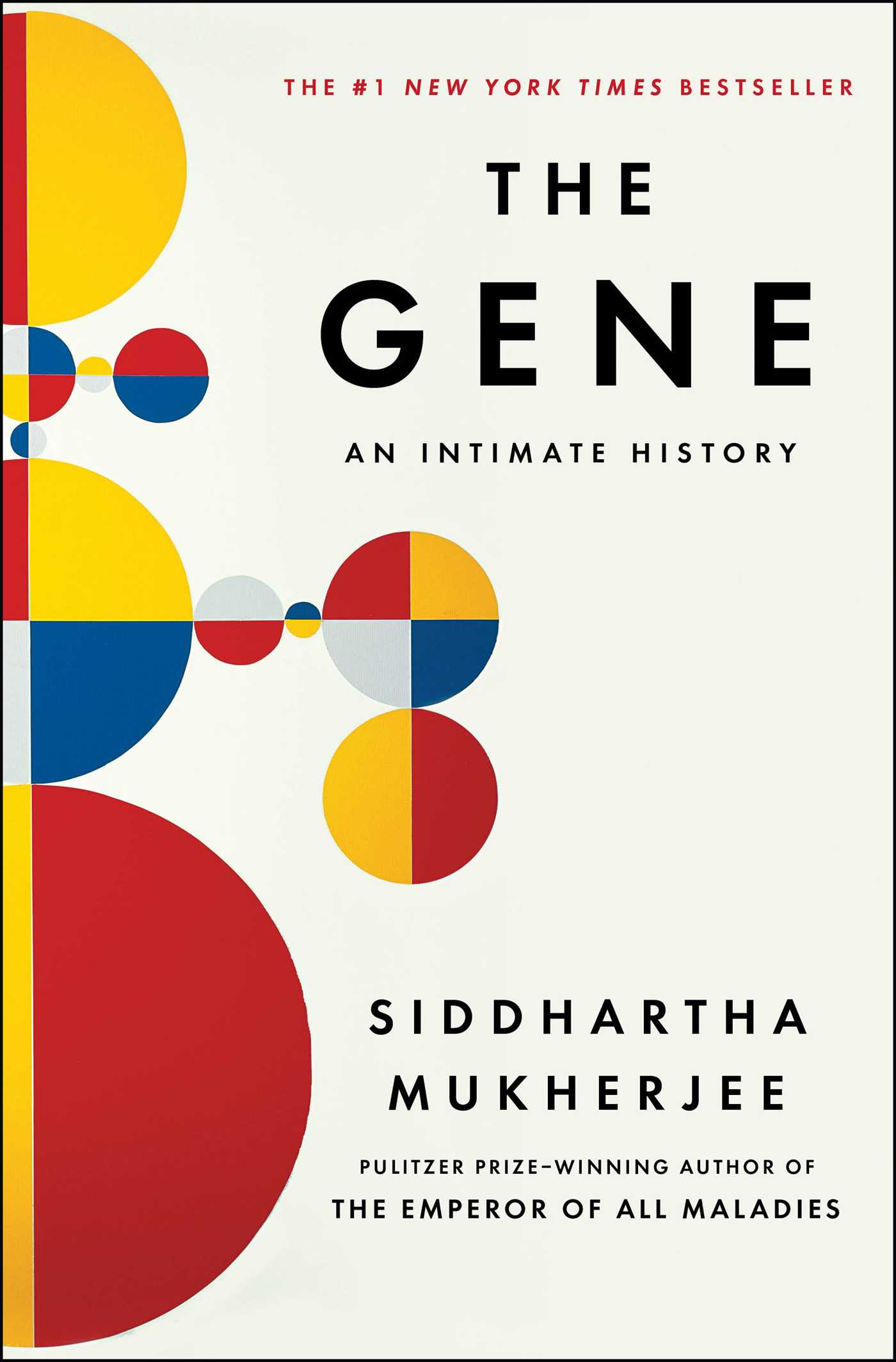With a Pulitzer winner providing a link between society, illnesses and science in the vein of a detective fiction and a mainstream Bollywood movie starting candid conversations around mental health in 2016, coming to terms with mental diseases and sexual identities will hopefully become easier among a wider public, says Barnamala Roy.
I had devoted the past week to the 2016 Pulitzer-winner Siddhartha Mukherjee’s The Gene: an Intimate History- a gripping and terrifying account of the gene’s discovery and the consequent scientific experiments in the field of genetics. Mukherjee’s insights into how the political ambition of the Nazis, egged on by their dream of racial purity met the fanaticism of the scientists and physicians to unfold the horrors of the Second World War in concentration camps are chilling. The trope of racial purity, with which the Nazis were coaxing the law on its side to exterminate a population of billions, had its precedence in the eugenicists of the 1920-s who sentenced the “feeble-minded” to colonies. “Feeble-mindedness” could be attributed to a miscellany of people- ranging from prostitutes, feminists and rebellious adolescents to depressives, dyslexics and schizophrenics. Their containment rather than treatment within colonies depended on testimonies of symptoms, rather than proper diagnosis of mental illness. The vigilance of three generations of women in the Buck family, confinement of mother and daughter in the Virginia Colony (Emma and Carrie Buck) and the final sterilisation of Carrie points to the eugenicists’ persistent resolve in disallowing the inheritance of ‘feeble-mindedness’ through reproduction. That Mukherjee dedicates The Gene to Carrie Buck reflects his deep-seated empathy towards mental illness darkly recurring in his family history.
 In revealing the ‘intimate history’ in The Gene, Mukherjee dispels the hush that is maintained regarding mental diseases, especially when it comes to close family members. Despite the advancement of medical treatment, the perplexing nature of mental illnesses, and lack of proper awareness, often leads to improper or delayed diagnosis and lack of sustained treatment. Mukherjee talks of both lack of diagnosis and treatment; he unravelled the deeper reason of his uncle Rajesh’s death: bipolar disorder, years after his untimely demise at the age of twenty-two. His other uncle Jagesh (after diagnosed with schizophrenia, but never treated medically) had surrendered to his grandmother’s care till her death, and then absconded to join a religious sect.
In revealing the ‘intimate history’ in The Gene, Mukherjee dispels the hush that is maintained regarding mental diseases, especially when it comes to close family members. Despite the advancement of medical treatment, the perplexing nature of mental illnesses, and lack of proper awareness, often leads to improper or delayed diagnosis and lack of sustained treatment. Mukherjee talks of both lack of diagnosis and treatment; he unravelled the deeper reason of his uncle Rajesh’s death: bipolar disorder, years after his untimely demise at the age of twenty-two. His other uncle Jagesh (after diagnosed with schizophrenia, but never treated medically) had surrendered to his grandmother’s care till her death, and then absconded to join a religious sect.
The dark past of sterilising and confining those deemed mentally unfit by eugenicists that started from Carrie Buck and consequently extended to a population of five thousand each month by 1934 is indicative of the ‘race anxiety’ that persists in societies. The burden of heredity that is often responsible for the mental unfitness in families through multiple generations, inflicts denial or the inability to face it with affirmation. The use of visual media, most rampantly films, to foster any kind of consciousness among the public has been in vogue since the release of movies like Are you fit to be Married?– that propagated the need of superior genes (devoid of the history of illnesses-mental or otherwise) in order to marry and reproduce. Mental disturbances, infamous among writers, artists and scientists, have later inspired filmmakers to direct biopics like A Beautiful Mind, Camille Claudel and The Hours. How patients with depression have been treated across history have largely been informed by the families they belonged to-conducive or uncooperative, as Camille Claudel and The Hours illumine. The character of Virginia Woolf appears at the beginning of The Hours penning her last letter before drowning herself- which reveals no grievances, but merely gratitude and tenderness for her husband, Leonard. Her biography that evidences the patience of Leonard Woolf in treating and caring for his wife for decades (transporting her to a quiet suburb to relieve her of urban stress), is reaffirmed through the film. Contrastingly, in Camille Claudel– what comes across is the insensitivity in subjecting a patient to an asylum who does not consent to it. Camille appears visibly different from the other members of the asylum, and the doctors allow certain exemptions for her by virtue of it, like allowing her to cook and asking her assistance to attend to sicker patients. Near the close of the film when the acclaimed architect pleads with her brother to get her discharged- stressing that freedom is her only cure, he refuses and reasons that it is for her well-being. The life-long confinement of Claudel in an asylum raises questions about her family- whether it was a ploy to shirk responsibility and dispose of her by framing her as incurably mad.
Mental disturbances, infamous among writers, artists and scientists, have later inspired filmmakers to direct biopics like A Beautiful Mind, Camille Claudel and The Hours. How patients with depression have been treated across history have largely been informed by the families they belonged to-conducive or uncooperative, as Camille Claudel and The Hours illumine.
As late as 2016, when Gauri Shinde decides to explore the story of a young woman seeking psychotherapy in ‘Dear Zindagi’, the audience feels hopeful about the prospect of themes changing within Indian cinema. The film starts with a filmmaker praising the director of photography, Kaira (played by Alia Bhatt) for improvising on a scene and masterfully executing it. Her ruminations before her colleague (and romantic interest), Raghuvendra that the shot will not be credited to her and her desire to shoot independently familiarises us to the ambitions of a young cinematographer. The subsequent scenes which give us a sketch of her life: hanging out with friends and preferring them over her family, going to discos and ignoring calls from her mother and landlord fasten her more staunchly to modern metropolitan reality which is rash and brash. What comes across as arrogance on Kaira’s part, is promptly attributed to generational vice, financial and social privilege, youthful excess and the increased stress in lifestyles.
With the upsurge of online articles and social media pages that deal with mental disorders, personal accounts and survival stories, more and more people are identifying with the symptoms (and maybe seeking help, too). On the flip side, these symptoms are often amplifications of emotions that plague us occasionally. Mukherjee finds that in bipolar disorder, the patients’ emotional reactions to situations in life are not misplaced-only unchecked in degree, which though discomfiting, may not always seem out-of-place. This leads many to trivialise the narratives of personal suffering by labelling those who claim to identify with the disorders as immature or irresponsible. These frames of judgement pursue Kaira into not confronting her demons; even when she finally acknowledges her need for therapy and returns from her counsellor, the judgement stares back at her in the form of Raghuvendra (her ex-boyfriend). Not only does he find her behaviour immature, he is unable to understand how the news of his engagement could spell a disaster so magnitudinous for her. The audience cannot discount his logic; after all Kaira’s indifference to his proposal (of getting serious about their bond) is not quite in sync with her reaction to his decision of moving-on.Mukherjee finds that in bipolar disorder, the patients’ emotional reactions to situations in life are not misplaced, only unchecked in degree, which though discomfiting, may not always seem out-of-place.
Intermingled with her spells of volatility and coldness are glimpses of affection: in her disposition towards her friends, Fatima or Jackie and her bond with her brother…The lightheartedness with which the script sketches the portrait of Jug, succeeds in normalising the figure of a ‘Dimag ka Doctor’- removing the stigma that therapy has to be necessarily complex (we also seek therapy when we are bogged down by over-analysing our conflicts, without being diagnosed with a grave disorder).
This emotional disconnect is symptomatic of her character since early on; she literally barks at the couple who accidentally bumps into her and even picks up a stone and aims it at them till restrained by her two friends. She rejoices at the prospect of work getting cancelled at Goa, causing her friend to exclaim that she is the only person blind to the charms of the place. Intermingled with her spells of volatility and coldness are glimpses of affection: in her disposition towards her friends, Fatima or Jackie and her bond with her brother (in spite of mentioning how biased her parents have been towards him). It is expressed in gestures like giving away her food to the child beggar and in her squeezing of a coworker’s shoulder who reveals that he is undergoing psychotherapy to accept his sexual identity of a homosexual. This leads us to her confession to Dr. Jahangir Khan/Jug (the therapist played by Shah Rukh Khan) later that friendships are so much easier than romantic relationships which irritate her. Jug presents a predictable analysis that she is guarded in her bonds towards her romantic partners and her parents but, nevertheless, helps her identify the fear of abandonment that she needs to overcome. The lightheartedness with which the script sketches the portrait of Jug, succeeds in normalising the figure of a ‘Dimag ka Doctor’- removing the stigma that therapy has to be necessarily complex (we also seek therapy when we are bogged down by over-analysing our conflicts, without being diagnosed with a grave disorder). It is reflected in the housemaid’s realisation during a talk over Skype with Kaira: “Such doctors also exist? Then, we may all need to consult them once in a while.” The counsellor too faces problems in his family, not alien from his patients. In his introductory scene, Jug mentions in his speech how his own family passes him off as a gynecologist among relatives and friends. In course of Kaira’s therapy, we get to know about his divorce, and his keenness to provide his son (who stays away from him) with good memories, which he may recall to his own therapist later on.
Mukherjee had mentioned the demise of his grandfather and the riots during partition in The Gene before delving into his uncles’ histories of bipolar disorder (Rajesh) and schizophrenia (Jagesh). Trauma in early life and genetic aberrations entwine to produce a pattern of mental disturbances, he implies. Kaira’s attachment to the therapist is a natural progression fuelled by a joy of recovery that Jug helps her discover. It is in keeping with her psychological history of abandonment by her parents, after which she did not find comfort round a parental figure. He gives her the good memories that he deems crucial for all parents to provide their children, and from which Kaira had felt deprived.When parents do not address the wound they cause a child by their actions (sometimes unwittingly) justifying it as the plausible line of action, their good will goes misconstrued or unrecognized later.
With a Pulitzer winner providing a link between society, illnesses and science in the vein of a detective fiction and a mainstream Bollywood movie starting candid conversations around mental health in 2016, coming to terms with mental diseases and sexual identities will hopefully become easier among a wider public. Especially, with subsequent representations of them in varied mediums.
Images via www.ibtimes.co.in and www.goodreads.com














